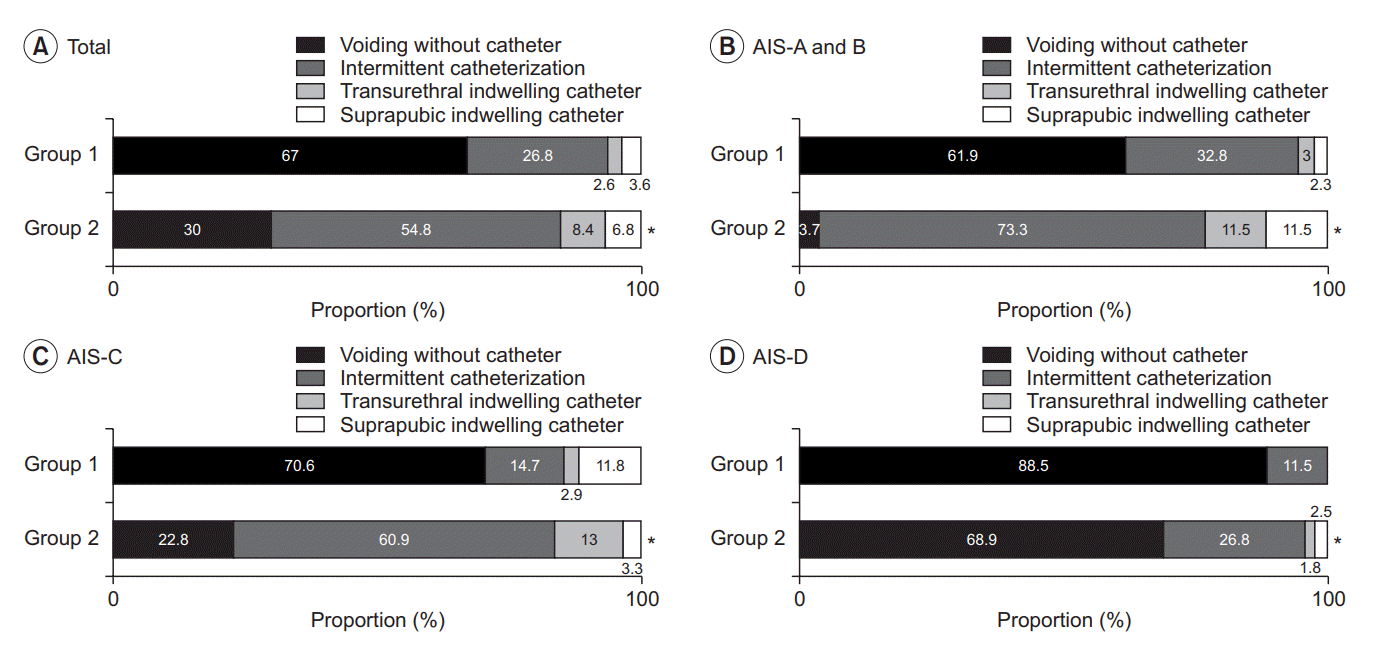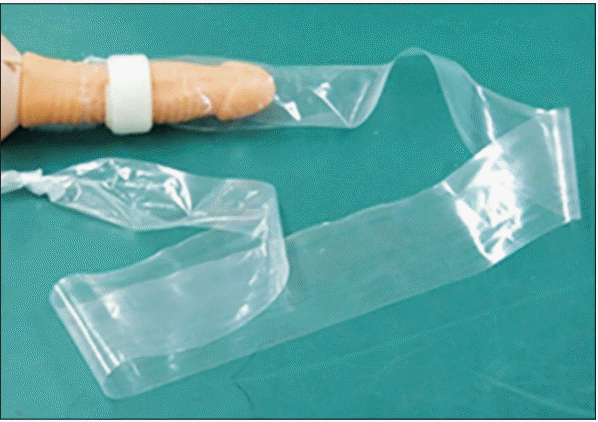1. Ginsberg D. The epidemiology and pathophysiology of neurogenic bladder. Am J Manag Care. 2013; 19(10 Suppl):s191–6.
2. Adriaansen JJ, van Asbeck FW, Tepper M, Faber WX, Visser-Meily JM, de Kort LM, et al. Bladder-emptying methods, neurogenic lower urinary tract dysfunction and impact on quality of life in people with long-term spinal cord injury. J Spinal Cord Med. 2017; 40:43–53.

3. Gohbara A, Tanaka K, Kawaji K, Yokomizo Y. Urinary tract management in patients with incomplete cervical cord injury during the recovery phase. Spinal Cord. 2013; 51:310–3.

4. Weld KJ, Dmochowski RR. Effect of bladder management on urological complications in spinal cord injured patients. J Urol. 2000; 163:768–72.

5. Pettersson-Hammerstad K, Jonsson O, Svennung IB, Karlsson AK. Impaired renal function in newly spinal cord injured patients improves in the chronic state: effect of clean intermittent catheterization? J Urol. 2008; 180:187–91.
6. Esclarin De Ruz A, Garcia Leoni E, Herruzo Cabrera R. Epidemiology and risk factors for urinary tract infection in patients with spinal cord injury. J Urol. 2000; 164:1285–9.
7. Ost MC, Lee BR. Urolithiasis in patients with spinal cord injuries: risk factors, management, and outcomes. Curr Opin Urol. 2006; 16:93–9.

8. Cameron AP, Rodriguez GM, Schomer KG. Systematic review of urological followup after spinal cord injury. J Urol. 2012; 187:391–7.

9. Peatfield RC, Burt AA, Smith PH. Suprapubic catheterisation after spinal cord injury: a follow-up report. Paraplegia. 1983; 21:220–6.

10. Song BD, Jang SJ, Moon HW, Kim YH, Yang HS. A follow-up study of neurogenic bladder management in spinal cord injury patients: a preliminary study. J Korean Acad Rehabil Med. 1988; 12:23.
11. Park CI, Shin JC, Kim SW, Jang SH, Chung WT, Kim HJ. Epidemiologic Study of Spinal Cord Injury. J Korean Acad Rehabil Med. 1999; 23:267–75.
12. Ord J, Lunn D, Reynard J. Bladder management and risk of bladder stone formation in spinal cord injured patients. J Urol. 2003; 170:1734–7.

13. Giannantoni A, Scivoletto G, Di Stasi SM, Silecchia A, Finazzi-Agro E, Micali I, et al. Clean intermittent catheterization and prevention of renal disease in spinal cord injury patients. Spinal Cord. 1998; 36:29–32.

14. Afsar SI, Yemisci OU, Cosar SN, Cetin N. Compliance with clean intermittent catheterization in spinal cord injury patients: a long-term follow-up study. Spinal Cord. 2013; 51:645–9.

15. Curt A, Rodic B, Schurch B, Dietz V. Recovery of bladder function in patients with acute spinal cord injury: significance of ASIA scores and somatosensory evoked potentials. Spinal Cord. 1997; 35:368–73.

16. Savic G, Frankel HL, Jamous MA, Soni BM, Charlifue S. Long-term bladder and bowel management after spinal cord injury: a 20-year longitudinal study. Spinal Cord. 2018; 56:575–81.

17. Cameron AP, Wallner LP, Tate DG, Sarma AV, Rodriguez GM, Clemens JQ. Bladder management after spinal cord injury in the United States 1972 to 2005. J Urol. 2010; 184:213–7.

18. Hansen RB, Biering-Sorensen F, Kristensen JK. Bladder emptying over a period of 10-45 years after a traumatic spinal cord injury. Spinal Cord. 2004; 42:631–7.

19. Wyndaele JJ, Bruschini H, Madersbacher H, Moore K, Pontari M, Wein A. Neurological patients need evidence-based urological care. Neurourol Urodyn. 2010; 29:662–9.

20. Gomelsky A, Lemack GE, Weld KJ, Dmochowski RR. Urodynamic patterns following ischemic spinal cord events. J Urol. 2003; 170:122–5.

21. Lee BS. Rehabilitation of spinal injury. In : Korean Neurotraumatology Society, editor. Neurotraumatology. 4th ed. Seoul: Koonja;2019. p. 580–4.
22. Roh DK, Lee BS, Kim SK, Nam KY, Kim DA, Kim BS. Study on the changes of voiding methods of patients with SCI after discharge: focusing on the patients participating in the regular urinary tract surveillance program. J Korean Acad Rehabil Med. 2007; 31:92–6.
23. Toda M, Nakatani E, Omae K, Fukushima M, Chin T. Age-specific characterization of spinal cord injuries over a 19-year period at a Japanese rehabilitation center. PLoS One. 2018; 13:e0195120.






 PDF
PDF Citation
Citation Print
Print




 XML Download
XML Download